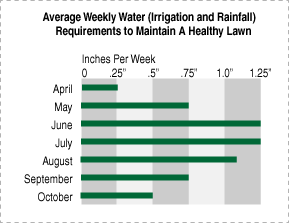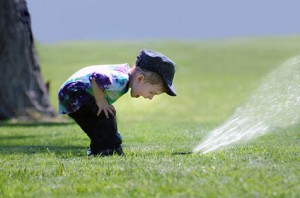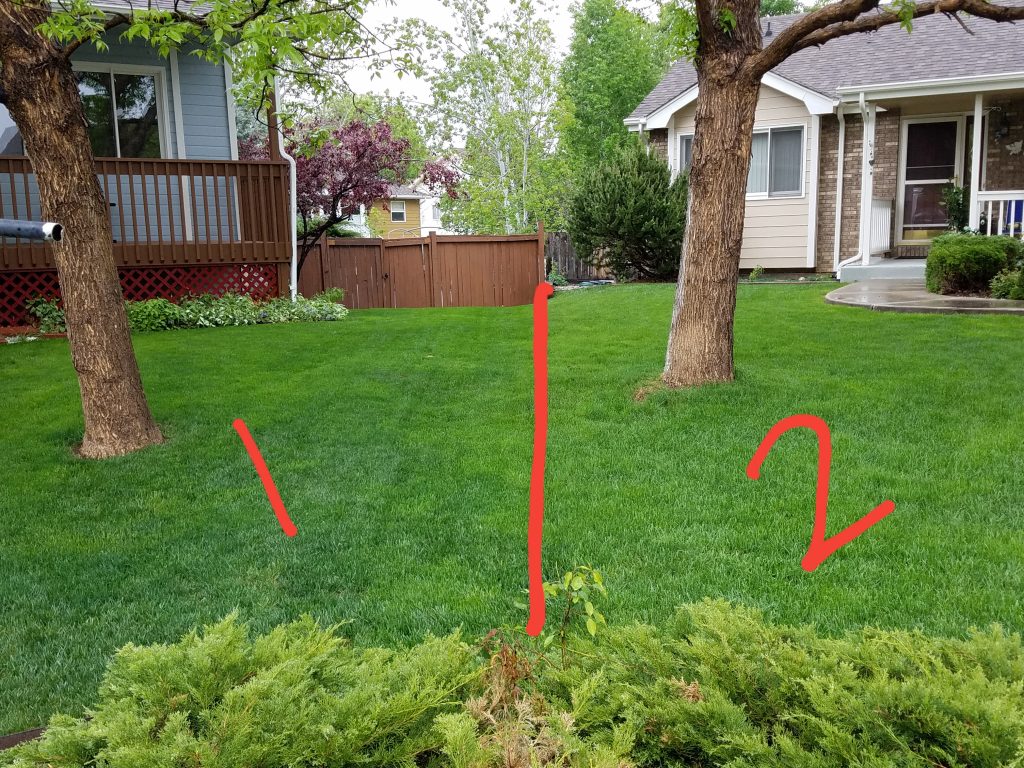GRASS DOESN’T WASTE WATER! PEOPLE DO!
How Much Water Are You Actually Applying?
 Verifying watering uniformity can be accomplished with a very simple and inexpensive method that uses only 4 to 6 flat-bottomed, straight-sided cans (gauges), a ruler and a watch.
Verifying watering uniformity can be accomplished with a very simple and inexpensive method that uses only 4 to 6 flat-bottomed, straight-sided cans (gauges), a ruler and a watch.
- Arrange “gauges” at random distances away from any sprinkler, but all within the area you assume is being covered.
- Run the sprinkler for a specific time (pop-up spray heads – 15 minutes, rotors- 30 minutes).
- Measure the amount of water in each can, checking for uniformity. Some variation is expected, but a difference of 10% or more between any two gauges must be addressed by adjusting sprinkler coverage or repairing sprinkler heads.
 When Should You Water?
When Should You Water?
One simple method of determining whether the grass needs watering is to become aware of dehydration signs given by the grass. They are:
First Stage – grass blades turn bluish gray in color.
Second Stage – footprints or mower wheel tracks are left when walked upon.
Third Stage – grass blades turn straw color.
Another way is to use a soil probe, such as a screwdriver or large spike to determine how dry your lawn is. If the probe can be pushed into the soil easily, it’s probably still moist, but if it takes a lot of pressure to push it in, it is time to water.
Watering Guide
The amount of water shown illustrates the need for more water in the heat of the season and less during cooler periods. Apply 1/2″-3/4″ of water in 2 or 3 cycles to promote deeper infiltration and minimize run-off. Adjust the amount of water throughout the growing season by how often the grass is irrigated. Check the lawn as stated above to see if it needs water. Postpone or skip watering if there has been sufficient rainfall.

